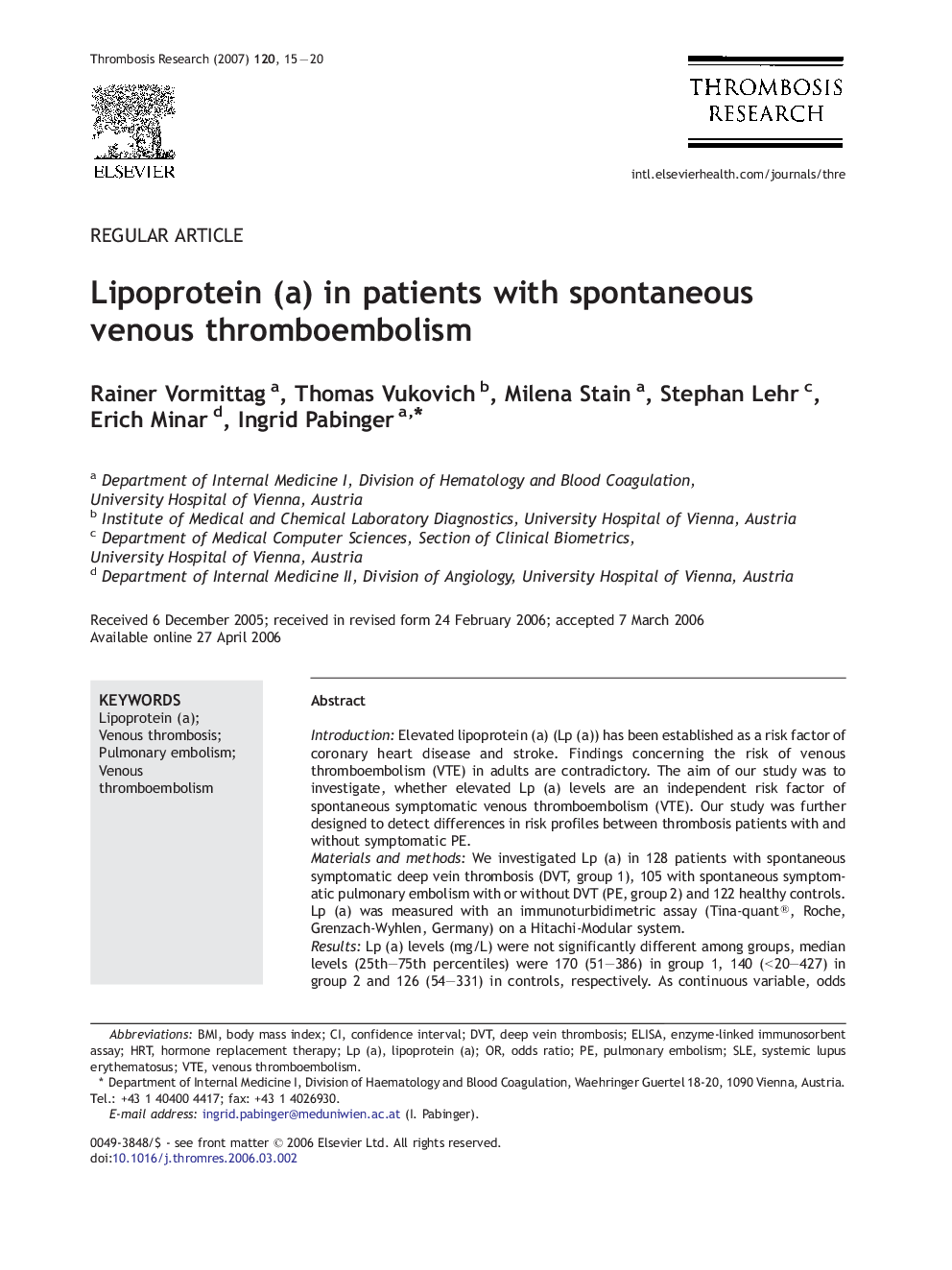| Article ID | Journal | Published Year | Pages | File Type |
|---|---|---|---|---|
| 3028460 | Thrombosis Research | 2007 | 6 Pages |
IntroductionElevated lipoprotein (a) (Lp (a)) has been established as a risk factor of coronary heart disease and stroke. Findings concerning the risk of venous thromboembolism (VTE) in adults are contradictory. The aim of our study was to investigate, whether elevated Lp (a) levels are an independent risk factor of spontaneous symptomatic venous thromboembolism (VTE). Our study was further designed to detect differences in risk profiles between thrombosis patients with and without symptomatic PE.Materials and methodsWe investigated Lp (a) in 128 patients with spontaneous symptomatic deep vein thrombosis (DVT, group 1), 105 with spontaneous symptomatic pulmonary embolism with or without DVT (PE, group 2) and 122 healthy controls. Lp (a) was measured with an immunoturbidimetric assay (Tina-quant®, Roche, Grenzach-Wyhlen, Germany) on a Hitachi-Modular system.ResultsLp (a) levels (mg/L) were not significantly different among groups, median levels (25th–75th percentiles) were 170 (51–386) in group 1, 140 (< 20–427) in group 2 and 126 (54–331) in controls, respectively. As continuous variable, odds ratios for VTE for a 100 mg/L increase of Lp (a) were 1.1 [95% confidence interval 0.98–1.2] for group 1 versus controls and 1.1 [0.95–1.2] for group 2 versus controls. The prevalence of Lp (a) above 300 mg/L was not significantly different among patients and controls (group 1: 30%, group 2: 32% and controls: 25%, p = 0.4, p = 0.2, respectively).ConclusionsIn conclusion we found no association between Lp (a) and VTE regardless whether DVT occurred together with PE or not.
